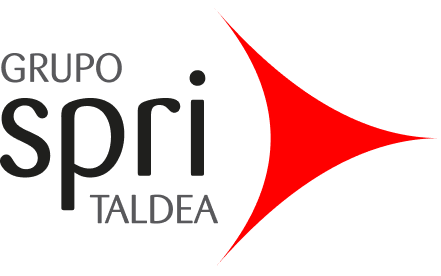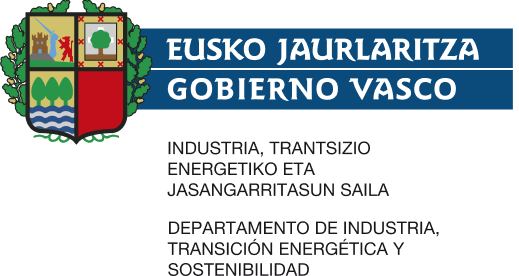Thistle_10
Active silymarin: antioxidant and soothing for the skin.
Silibinin (C25H22O10)—also known as silybin—is the main active compound of silymarin, the standardized extract from milk thistle seeds (Silybum marianum). It is a flavonolignan, consisting of an approximately equal mixture of two diastereoisomers: silybin A and silybin B.
Silibinin is recognized in dermatology for its antioxidant, anti-inflammatory, depigmenting, and protective properties against environmental aggressors—contributing to healthier, more even, and youthful-looking skin.
- check_circleMaximum potency and stability: Our technology concentrates silibinin, keeping it stable and highly bioavailable to maximize its efficacy.
- check_circleEasy integration: Thanks to Optidel’s innovation, silibinin can be seamlessly incorporated into any cosmetic formulation.
- check_circle Superior multifunctionality: Combines antioxidant, photoprotective, and anti-inflammatory benefits in a single active.
- check_circleTotal protection: Shields skin against the effects of time and urban life challenges—promoting a more resilient and radiant appearance.
How does it work?
Immediate relief and reduced irritation
Thistle_10 significantly lowers inflammatory markers, helping to soothe reactive skin and reduce redness and discomfort.
Strengthens the skin barrier
Its antioxidant and anti-inflammatory action protects sensitive skin from external aggressors such as pollution, UV rays, and climate changes—helping prevent flare-ups and reactions.
Deep hydration and repair
Promotes the recovery of elasticity and hydration—two key needs for sensitive skin prone to dryness and tightness.
Prevents premature aging
By reducing oxidative damage and restoring collagen and elastin, Thistle_10 helps keep skin youthful, firm, and resilient—even in delicate skin types.
Tolerance and softness
Its bioactive profile makes it ideal for facial care routines in easily irritated or sensitized skin, delivering comfort and softness from the very first application.
The Impact of Oxidative Stress on Reactive and Sensitive Skin
Reactive skin is a type of sensitive skin characterized by extreme responsiveness due to a weakened protective barrier. This makes it more prone to irritation from factors that would not typically affect other skin types.
When symptoms arise, reactive skin may experience redness, tightness, stinging, or even itching.
Oxidative stress has a significant impact on reactive and sensitive skin, exacerbating its vulnerability and accelerating processes such as premature aging, inflammation, and skin barrier dysfunction. Oxidative stress significantly affects reactive and sensitive skin by triggering a cascade of cellular damage that worsens its natural fragility. This imbalance between free radicals and antioxidants acts on multiple levels:
Cellular Consequences
keyboard_arrow_downWeakening of the skin barrier:
Free radicals damage the skin's protective layer, making it easier for irritants to penetrate and increasing sensitivity.
Persistent inflammation:
Oxidative stress triggers chronic inflammatory processes, leading to redness, burning sensations, and overall skin discomfort.
Accelerated aging:
The production of collagen, elastin, and hyaluronic acid decreases, resulting in loss of firmness, the appearance of wrinkles, and reduced radiance.
Visible Consequences
keyboard_arrow_downIncreased hypersensitivity:
The skin becomes more reactive to external factors such as weather, cosmetic products, or pollution, causing frequent discomfort.
Dehydration:
The skin's ability to retain moisture is compromised, leaving it dry, tight, and dull in appearance.
Persistent erythema:
Ongoing redness reflects continuous irritation, a weakened skin barrier, and a prolonged lack of comfort.
In-vitro Efficacy
Antioxidant Effect: ROS Activity Test
Reduction of 150% (ROS)
50% as effective as Vitamin C
Advanced protection: Thistle-10 provides proven defense against environmental stress, helping to preserve skin health and youthfulness.
Comprehensive Inflammation Protection
Reduces inflammatory markers and strengthens the skin against external aggressors.
See graph
keyboard_arrow_downROS production (percentage) in HaCaT keratinocyte cell line obtained in the antioxidant assay after 4 hours of exposure to tBPH with the test ingredient at the indicated percentages. The positive control, tBPH insult, represents cells exposed to the oxidizing agent tBPH alone. Bars represent the mean of six technical replicates from one independent experiment. Error bars represent standard deviation. Statistical significance * p < 0.005.
Anti-inflammatory Activity
Reduces inflammation by up to 54%
Comprehensive Inflammation Protection
Reduces inflammatory markers and strengthens the skin against external aggressors.
Modulates the Inflammatory Response by up to 50%
Effectively acts on IL-8, helping to keep skin calm and protected.
See graph
keyboard_arrow_downIn vitro assay performed on differentiated human monocytic cells (THP-1), stimulated with LPS to induce inflammation. The compound was applied at various concentrations for 24 h and its effect was evaluated by measuring IL-8 levels using ELISA. The reduction in this pro-inflammatory cytokine confirmed its anti-inflammatory action.
Ex-vivo Results
Structural Protection of the Skin
Full recovery of collagen and elastin
Thistle_10: Comprehensive recovery of the extracellular matrix
Reverses photoaging and restores collagen and elastin to match or even exceed levels found in healthy skin, bringing back firmness and vitality.
See graph
keyboard_arrow_downThe ex vivo study evaluated Thistle10’s ability to modulate the extracellular matrix in photoaged human skin explants (Phototype III, 47 years), exposed to simulated solar irradiation and corticosteroid treatment. Soluble collagen and elastin levels were quantified using specific colorimetric assays, allowing assessment of the treatment’s ability to preserve or restore these key structural components in the face of photoaging-induced damage.
Evaluation of Anti-inflammatory Activity
Inflammation reduction >50%
Advanced anti-inflammatory control
Prevents the rise of key cytokines and restores skin balance, even in photoaged skin, maintaining its protective action for up to 72 hours.
See graph
keyboard_arrow_downTo analyze the inflammatory response associated with skin aging and the impact of Thistle10 treatment, concentrations of the pro-inflammatory cytokines IL-6 and IL-8 were measured in the culture supernatants using ELISA assays. These markers reflect the chronic inflammatory phenotype of aged skin and allow evaluation of the compound’s anti-inflammatory potential in the ex vivo model.
Application
Thistle-10 is a versatile and highly effective ingredient for creams, serums, masks, boosters, and soothing products, specially formulated for anti-aging care, antioxidant protection, and relief for sensitive or reactive skin.
Recommended dosage: 1% - 3%
Formulation Tips
Add to the bulk during the final stage of the production process, ensuring the temperature does not exceed 40°C.
Add to the mixture and stir until fully homogeneous.
Active Content (% w/w)
Silibinin at 10%
INCI name
INCI name: Propylene Glycol And Silybum Marianum Fruit Extract.
CAS: 57-55-6, 84604-20-6
Documentation
If you want to explore all the details about Optidel THISTLE_10, you can download the documentation here. You’ll find information about its properties, how to use it, and the best recommendations to make the most of it.





